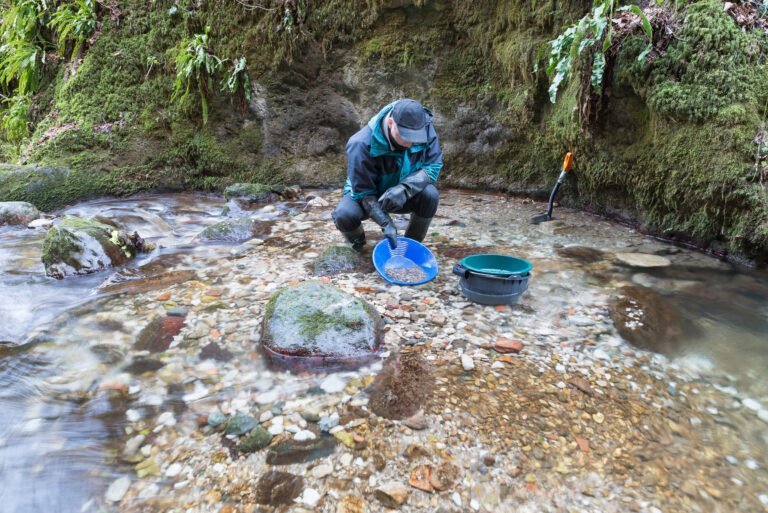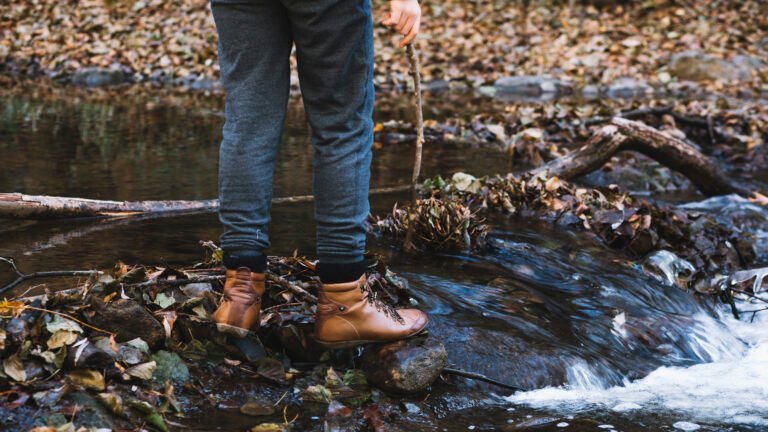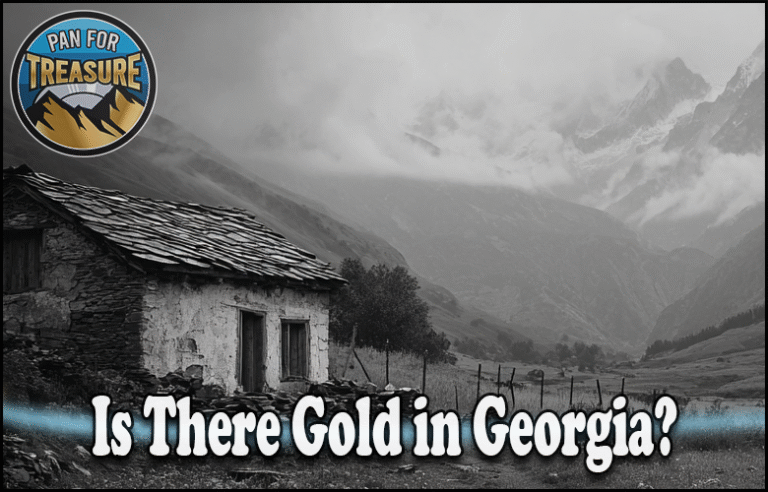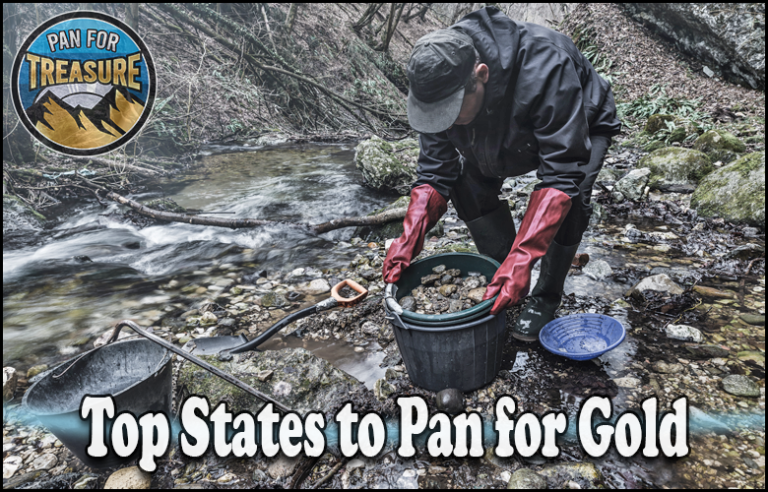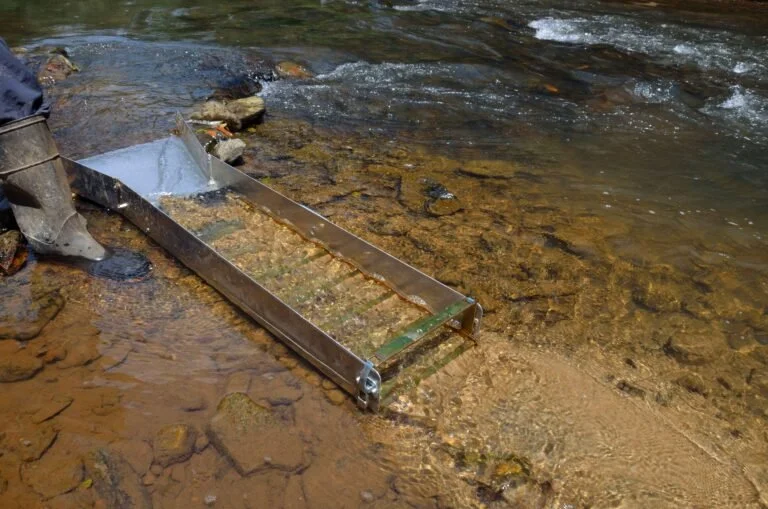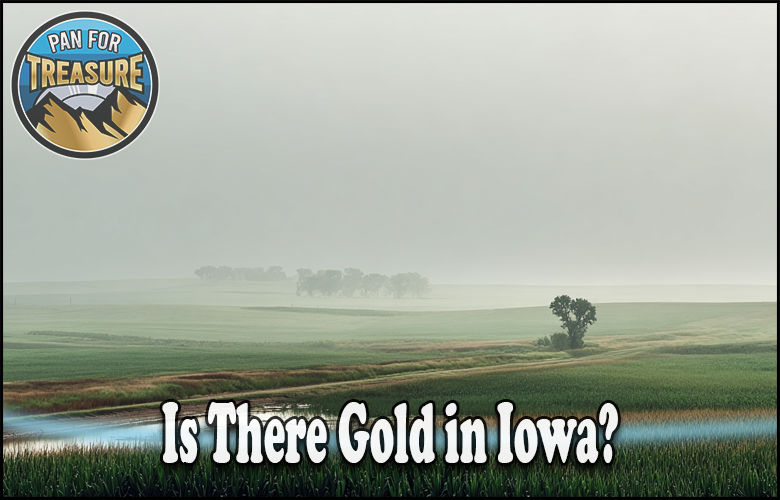
Disclosure: This Post Contains Affiliate Links; We earn a commission on purchases.
Are you curious about whether there is gold in Iowa?
Well, the answer may surprise you!
While it’s true that Iowa is not known for its large-scale gold mines like other states, there is indeed gold to be found in this Midwestern state.
Back in 1853, gold was discovered in Iowa, sparking a mini gold rush. Miners flocked to the area near Eldora City in Hardin County, hoping to strike it rich.
However, the quantities of gold found were not enough for profitable mining operations, leading to the eventual decline of the gold rush.
Despite this, there have been reports of successful gold panning and prospecting in various locations across the state.
So, where can you find gold in Iowa? While there are no outcroppings of gold-rich rocks, small amounts of gold can be found in the sands and gravels of the state’s rivers.
Some of the areas known for gold include the Iowa River near Hardin County, Otter Creek in Fayette County, and Cedar Creek near Stockport.
It’s important to note that the gold in Iowa is generally fine, and prospectors need to work carefully to retain these small particles.
Key Takeaways:
- Iowa is not known for large-scale gold mining operations, but there is gold to be found in the state’s rivers.
- The quantities of gold found in Iowa were not enough for profitable mining, but there have been reports of successful gold panning.
- Popular areas for finding gold in Iowa include the Iowa River, Otter Creek, and Cedar Creek.
- The gold in Iowa is generally fine, so prospectors need to work carefully to retain these small particles.
- Iowa’s gold deposits are believed to be glacial gold brought by glaciers that once covered the state.
Where can gold be found in Iowa?
If you’re interested in prospecting for gold in Iowa, there are several areas where gold deposits have been found. While the quantities may not be as significant as in other gold-rich regions, dedicated prospectors can still find some gold in Iowa.
Here are some locations in Iowa where gold has been discovered:
- The Iowa River near Hardin County
- Otter Creek in Fayette County
- Cedar Creek near Stockport
- Indian Creek near Farmington
- The Volga River and its tributaries in Fayetteville County
- The Des Moines River near Keokuk in Lee County
- The Big Sioux River near Klondike in Lyon County
It’s important to note that the gold found in Iowa is generally very fine, often in the form of small particles. As a result, prospectors need to work carefully to retain these tiny particles and extract them from the surrounding sands and gravels. While it may require some patience and meticulous techniques, the thrill of finding gold in Iowa is worth the effort for passionate prospectors.
Glacial gold in Iowa
All the gold found in Iowa is believed to be glacial gold, brought by glaciers that once covered the state. These glaciers carried gold-bearing gravels from Canada, which were scattered across the Midwest when the glaciers receded. The gold concentrations in Iowa are generally difficult to predict, but the size of the gold is extremely fine, requiring careful panning techniques.
While not suitable for large-scale commercial mining, there is an active group of prospectors in Iowa who are engaged in Iowa gold panning and exploring the state for potential gold deposits. These dedicated individuals embrace the thrill of the hunt and the joy of discovering even the tiniest specks of gold.
Whether it’s setting up their panning gear by the flowing rivers or combing through the remnants of ancient waterways, these gold panning enthusiasts in Iowa cherish every sparkle they find. They understand that mining for gold in Iowa is a treasure hunt, where patience and perseverance are rewarded.
Glacial gold panning in Iowa offers a unique opportunity for adventure seekers and nature enthusiasts alike. As prospectors traverse the state’s picturesque landscapes, they not only immerse themselves in its rich history, but also uncover hidden secrets left behind by the ancient glaciers.
The image below showcases the beauty of Iowa’s natural scenery, where prospectors can immerse themselves in the tranquility of the outdoors as they search for glimmering specks of gold.
Iowa Gold Panning Locations
| Location | County |
|---|---|
| Iowa River | Hardin County |
| Otter Creek | Fayette County |
| Cedar Creek | Stockport |
| Indian Creek | Farmington |
| Volga River and tributaries | Fayetteville County |
| Des Moines River | Keokuk |
| Big Sioux River | Klondike |
Prospectors exploring these locations harness the thrill of the unknown, as they never know when they might uncover a hidden pocket of gold. While they may not strike it rich like the prospectors of the past, the sheer joy of finding gold in the rivers and streams of Iowa fuels their passion for gold prospecting in Iowa.
“Iowa’s glacial gold adds a sense of mystery and excitement to the art of gold panning. Every grain of gold discovered is a testament to the power of nature and the spirit of adventure.”
So, if you’re ready to embark on an extraordinary treasure hunt and experience the allure of mining for gold in Iowa, grab your pan, head to one of the prime locations, and let the rivers guide you to the hidden treasures buried within the state’s glacial history.
Historical Gold Rushes in Iowa
The discovery of gold in Iowa in 1853 ignited a short-lived gold rush in the state. Miners from all over flocked to the area near Eldora City in Hardin County, driven by the hope of striking it rich. However, their dreams were quickly dashed when they realized that the quantities of gold found were not profitable for large-scale mining operations.
Despite the disappointment, the gold rush in Iowa remains a fascinating chapter in the state’s history. It serves as a testament to the allure of gold and the enduring spirit of adventure that drove prospectors to seek their fortunes in uncharted territories.
“The discovery of gold in Iowa attracted thousands of people seeking their share of the wealth. Unfortunately, the size and quality of the gold deposits did not meet expectations, leading to a rapid decline in mining activity.” – [Author Name]
Although the gold rush in Iowa may not have yielded monumental wealth, it played a significant role in shaping the state’s identity and historical narrative. Today, it stands as a reminder of the bold endeavors and aspirations of those who ventured into the unexplored lands of Iowa in search of riches.
Notable Figures of Iowa’s Gold Rush Era
- John F. Henderson: A prominent prospector and adventurer who played a pivotal role in the early days of Iowa’s gold rush. Henderson’s unwavering determination and perseverance inspired countless individuals to embark on their own gold-seeking expeditions.
- Mary Johnson: A daring and resilient pioneer who defied societal norms to pursue gold mining in Iowa alongside her male counterparts. Johnson’s tenacity and trailblazing spirit challenged gender stereotypes of the time.
Table: Key Statistics of Iowa’s Gold Rush
| Year | Gold Production (in ounces) | Number of Miners | Notable Locations |
|---|---|---|---|
| 1853 | 400 | 2,000 | Eldora City, Hardin County |
| 1854 | 200 | 800 | Cedar Creek, Stockport |
| 1855 | 100 | 500 | Indian Creek, Farmington |
Commercial Gold Mining in Iowa
During the early 1900s, the Big Sioux River in Lyon County, Iowa, witnessed the only known commercial gold mining venture in the state. Operating in the area of Klondike, this commercial operation played a significant role in Iowa’s gold mining history. While the venture was short-lived, it remains a testament to the pursuit of gold in the Hawkeye State.
Most gold mining activities in Iowa, however, are conducted on a smaller scale by individual prospectors. These dedicated individuals explore various rivers and creeks in search of the precious metal, contributing to the ongoing legacy of gold mining in the state.
Commercial Gold Mining in Iowa: A Historical Highlight
“Although Iowa’s commercial gold mining venture in Klondike was temporary, it holds an important place in the state’s gold mining history. It showcased the enthusiasm and determination of those seeking precious minerals in the heartland.”
– Gold Mining Enthusiast
While commercial gold mining opportunities may be limited, Iowa’s history and present-day prospecting activities offer a unique and exciting experience for those interested in the gold mining industry.
| Prospect | Type of Mining | Location |
|---|---|---|
| The Klondike Gold Mining Operation | Commercial Mining | Big Sioux River, Lyon County |
| Individual Prospectors | Small-scale Mining | Rivers and creeks across Iowa |
To better understand the scope of commercial gold mining in Iowa, let’s take a closer look at the table above:
- The Klondike Gold Mining Operation: This commercial mining venture focused on the Big Sioux River in Lyon County. Although short-lived, it remains an important part of Iowa’s gold mining history.
- Individual Prospectors: Most gold mining in Iowa today occurs on a small scale, with dedicated individuals prospecting various rivers and creeks across the state.
While commercial gold mining in Iowa may not be as prevalent as in other regions, the passion and spirit of gold prospecting continue to thrive.
Tips for Gold Prospecting in Iowa
When it comes to gold prospecting in Iowa, persistence and hard work are key. While the gold concentrations can be difficult to predict, there are some tips and techniques that can increase your chances of success.
- Search different areas: To find gold in Iowa, it’s important to explore various locations. Don’t limit yourself to just one spot. Try different rivers, creeks, and sandbars to increase your chances of finding gold.
- Be open to new locations: Don’t be afraid to step off the beaten path and explore new areas. Some of the best gold prospecting spots in Iowa may be hidden gems waiting to be discovered.
- Retain fine flour gold particles: Gold in Iowa is generally fine, so it’s crucial to work carefully to retain these small particles. Use proper panning techniques and be patient while filtering out unwanted materials.
- Focus on sandbars: Many successful prospectors in Iowa have found gold in the sandbars of the Iowa River. Keep an eye out for areas where water levels have receded, as they can expose previously hidden deposits of gold.
- Look for darker colored sands: Darker colored sands often indicate higher concentrations of fine gold. Pay attention to the color and texture of the sands during your prospecting activities.
To give you an idea of the potential gold prospecting spots in Iowa, here’s a table highlighting some of the notable locations:
| Location | County |
|---|---|
| Iowa River | Hardin County |
| Otter Creek | Fayette County |
| Cedar Creek | Stockport |
| Indian Creek | Farmington |
| Volga River | Fayetteville County |
| Des Moines River | Keokuk |
| Big Sioux River | Klondike |
Remember, successful gold prospecting in Iowa requires patience, dedication, and a willingness to explore different locations. With the right techniques and a bit of luck, you may just uncover a hidden treasure in the Hawkeye State.
Conclusion
While gold in Iowa may not be as abundant or profitable as in other states, there is still gold to be found for dedicated prospectors. Iowa’s glacial gold deposits offer a unique opportunity for those willing to put in the effort and work carefully to retain the small particles.
Whether it’s panning along the rivers or exploring new locations, the prospect of finding gold in Iowa adds excitement to the world of gold prospecting. So grab your pans and get ready to embark on a golden adventure in the Hawkeye State!

Meet Ryan Conlon, the passionate owner and driving force behind Pan for Treasure.
With an unwavering love for the art of gold panning, Ryan has transformed his enthusiasm into a thriving community hub for fellow treasure seekers. info@panfortreasure.com
A seasoned gold panning enthusiast, Ryan’s journey began with a simple pan and a dream, evolving into a deep appreciation for the history, geology, and thrill of uncovering precious metals.
Subscribe to Our Newsletter

